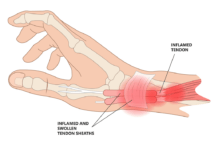Oral health is often overlooked when considering overall well-being and health policy decisions. Poor oral health has been coined as a “silent epidemic” that impacts about 4 billion people worldwide. In the United States alone, the annual financial impact of oral diseases is estimated to be about $136 billion. Further, the role of poor oral health in noncommunicable chronic diseases emphasizes the need to integrate oral health into health policy frameworks.1
Multiple public and private health entities have expressed the need to incorporate oral health into health policies to reduce health disparities. The Surgeon General’s Report from 2000 highlighted oral health as essential to overall well-being and indicated evident disparities in dental care access. In 2011, the Institute of Medicine report suggested that efforts to eliminate disparities in dental care access have been insufficient. More recently, in 2021, the National Institute of Dental and Craniofacial Research’s (NIDCR) “Oral Health in America: Advances and Challenges” report found minimal progress in reducing disparities in dental care access. The World Health Organization (WHO) supports health as a holistic state where oral health is recognized as vital.1
Oral health extends far beyond the teeth and oral tissues. Oral health impacts systemic health, including neurodegenerative diseases, diabetes, and cardiovascular disease. Multiple factors, including social, environmental, and economic factors, can influence oral health. Most oral diseases are preventable. In the case of dental caries, risks are highly modifiable with the proper support. Continued neglect of oral health diminishes masticatory function and quality of life (QoL). This can increase the risk of micronutrient deficiencies that could impact overall health.1
Oral health and nutrition are closely connected, as dietary habits play a vital role in developing dental diseases. Diets rich in sugars and fermentable carbohydrates significantly increase the likelihood of developing dental caries. Although dental caries is a slow-progressing and preventable condition, it can negatively impact a person’s ability to chew and enjoy a nutritious, well-balanced diet.1
Statistics show that about one in six children aged 6–11 have experienced tooth decay. A similar rate is seen among adolescents with untreated dental caries, and many older adults have lost all their teeth due to dental caries.1
The impact of dental caries and tooth loss on dietary choices, specifically the ability to follow the Dietary Guidelines for Americans (DGAs), is profound. Poor oral health often limits the intake of nutritious foods due to the inability to chew properly. This can influence long-term health outcomes.1
A scoping review aimed to bridge the gap between oral health and dietary guidelines by “examining the landscape of preventive strategies and interventions to achieve oral health equity.” This scoping review stressed the importance of paying particular attention to dental caries prevention, diet, and socioeconomic determinants across various demographics and geographic regions.1
The Scoping Review
This scoping review was designed to identify relevant studies centered on behavioral and educational programs and interventions to support effective preventive oral health practices in reducing dental caries and cariogenic biofilm.1
Population inclusion criteria included pregnant women, young children, and older adults. Study designs considered for the review were cross-sectional, case-control, cohort, and interventional studies, such as randomized controlled trials and systematic reviews. Studies included must report a clear positive impact on individual or population-level oral health outcomes, behaviors, or health promotion focusing on health equity.1
Additionally, the relevance of DGAs in addressing preventable oral disease and the focus on equity were required for inclusion.1
Non-English articles and those with poor design or methodological flaws were excluded. Studies reporting non-significant findings, those with small sample sizes, or those with results that cannot be generalized were excluded. Studies that suggested interventions that were not feasible or sustainable were also excluded.1
A team of six independent reviewers conducted this review. Five databases were searched for relevant articles that fit the inclusion criteria. After removing articles based on exclusion criteria and duplicates, 107 articles published between 2011 and 2022 were included. The studies originated from six of the seven continents, including Asia, Europe, North America, South America, Africa, and Oceania/Australia.1
The Results
The results of this review highlight the direct effects of dietary choices on dental caries risk and the broader implications for social determinants of health.1
Behavioral and Educational Interventions
Behavioral interventions to improve oral health were identified in 33 articles included in this review, covering various populations and countries. Educational interventions were examined in 39 other studies. These efforts primarily focused on reducing dental caries, promoting better oral hygiene practices, and enhancing oral health literacy.1
Successful strategies included:1
- School-based fluoride rinses led to fewer dental caries in children.
- Family-focused education for new parents improved feeding and brushing habits, resulting in a lower risk of dental caries in toddlers.
- Motivational interviewing in healthcare settings helped prevent dental caries in children from low-income families.
- Oral health education in schools that emphasize the importance of brushing time improved oral hygiene.
- Early identification of risk factors for early childhood caries was essential for prevention.
- The use of high-fluoride products and proper education on fluoride was paramount for children with high caries risk.
- As a teaching tool, innovative technology, such as games and animation, helped individuals better understand the importance of good oral health.
Foundational behaviors such as brushing, interdental cleaning, and using fluoride consistently showed substantial benefits in reducing dental caries. Interdental cleaning devices and proper brushing techniques were associated with a reduction in oral disease and tooth loss. Programs that promote early habits, such as supervised toothbrushing in schools (e.g., Scotland’s National Supervised Toothbrushing Program), were especially effective in establishing long-term oral health.1
Dietary Interventions
Diet plays a significant role in the development and prevention of dental caries. Findings from 35 studies indicated that poor dietary habits, particularly high sugar intake, are strongly associated with increased rates of dental caries.1
Studies included in this review indicated that awareness of the effects of sugar-free gum (SFG) on caries prevention is low. Still, regular use, especially of xylitol gum, reduces the caries risk by increasing salivary flow, neutralizing acid, and aiding in remineralization. It is also beneficial when used by mothers, benefiting both the mother and children over 4 years old. SFG could be a low-cost public health tool if distributed in schools or through assistance programs.1
Early feeding behaviors influence caries risk in young children. Breastfeeding has many benefits, but extended or nighttime breastfeeding requires careful oral hygiene to prevent dental caries. For instance, to balance the benefits of breastfeeding with oral health, children who are breastfed for over a year need oral hygiene practices, such as wiping their mouths after feeding.1
Diets rich in dairy, fruits, vegetables, and protein can help lower the risk of caries. The Healthy Eating Index indicates that overall diet quality is more important than the individual nutrients it comprises. Eating dairy or chewing SFG after sugary foods helps reduce dental caries. However, frequent consumption of snacks such as sweets and crackers increases the risk of dental caries.1
Notably, fluoridated water was superior to fluoridated salt in caries prevention among school-aged children in developing countries.1
Economic and social factors often limit access to nutritious food and fluoridated water. Lower-income families may struggle to afford healthy foods and may live in areas without community water fluoridation, increasing their caries risk.1
The evidence supports the following public health interventions:1
- Improved public education on healthy, budget-friendly food options.
- Expand access to community water fluoridation.
- Integrate culturally relevant dietary guidance.
- Improve access to affordable, nutritious food.
- Consider policy changes to promote healthier alternatives to sugary foods.
- Consider making SFG available at schools or in vending machines in school settings.
Practice and Policy
To reduce oral health disparities and ease the burden on the healthcare system, it’s essential to incorporate oral health strategies into public health policies, especially through the DGAs.1
Implementing oral health strategies through the DGAs can help address social and economic inequalities that drive oral diseases, leading to more equitable health outcomes. Policymakers should adopt evidence-based solutions that improve food security, promote healthy diets, and expand access to oral health education and services, particularly for vulnerable and underserved populations.1
Dietitians, allied health professionals, dental, behavioral, and mental health experts, as well as policymakers, especially those representing minority groups, must collaborate to develop comprehensive oral-nutrition guidelines. These efforts can help prevent systemic and metabolic diseases while reducing healthcare costs. Oral-nutrition initiatives can improve quality of life and reduce the years lost to disability.1
Oral health remains underprioritized in many healthcare systems. To align with global goals, including the WHO Global Oral Health Action Plan, oral health must be recognized as a key factor in comprehensive healthcare and fully integrated into healthcare strategies. Local leaders should raise awareness about how diet impacts oral and overall health. Public health campaigns should be adapted to reflect different communities’ cultural and regional needs.1
Oral health is essential to overall health. Integrating it into public policy, healthcare systems, and community education can improve lives, reduce costs, and promote lasting health equity.1
Strengths and Limitations
While aiming for comprehensive coverage, this review may have missed relevant studies due to limitations in the literature search and potential selection bias. The review focused on equity, health disparities, and social determinants of health to identify cost-effective and accessible strategies for improving oral health, particularly in underserved populations.1
However, this focus may have introduced bias or excluded some studies. Differences in research methods and study designs limit the strength of the conclusion. Despite that, the review highlights targeted interventions and proposes potential policy changes to improve oral health outcomes. Nonetheless, the authors call attention to the need for future research, including long-term studies and randomized controlled trials.1
Conclusion
Evidence suggests that combining education, improved food access, and effective public policy can help reduce dental disease and enhance community oral health. Effective management of oral health is vital for health equity. Integrating approaches such as behavior change, education, and dietary interventions can improve oral and overall health outcomes.1
Implementing SFG with xylitol, oral-nutrition health literacy enhancement, and targeted dietary practices, especially reduced sugar intake, are vital for improved oral and overall health. These strategies may also reduce healthcare costs.1
Oral health should no longer be considered an isolated issue but an integral part of overall health and well-being. These efforts can improve health worldwide but are also applicable on a smaller scale to address specific challenges within the United States.1
Ensuring access to resources, health and dental care contributes to a future that fosters an environment where oral health barriers are reduced, leading to health equity across all demographics.1
Before you leave, check out the Today’s RDH self-study CE courses. All courses are peer-reviewed and non-sponsored to focus solely on high-quality education. Click here now.
Listen to the Today’s RDH Dental Hygiene Podcast Below:
Reference
1. Chamut, S., Alhassan, M., Hameedaldeen, A., et al. Every Bite Counts to Achieve Oral Health: A Scoping Review on Diet and Oral Health Preventive Practices. Int J Equity Health. 2024; 23(1): 261. https://pmc.ncbi.nlm.nih.gov/articles/PMC11613938/










